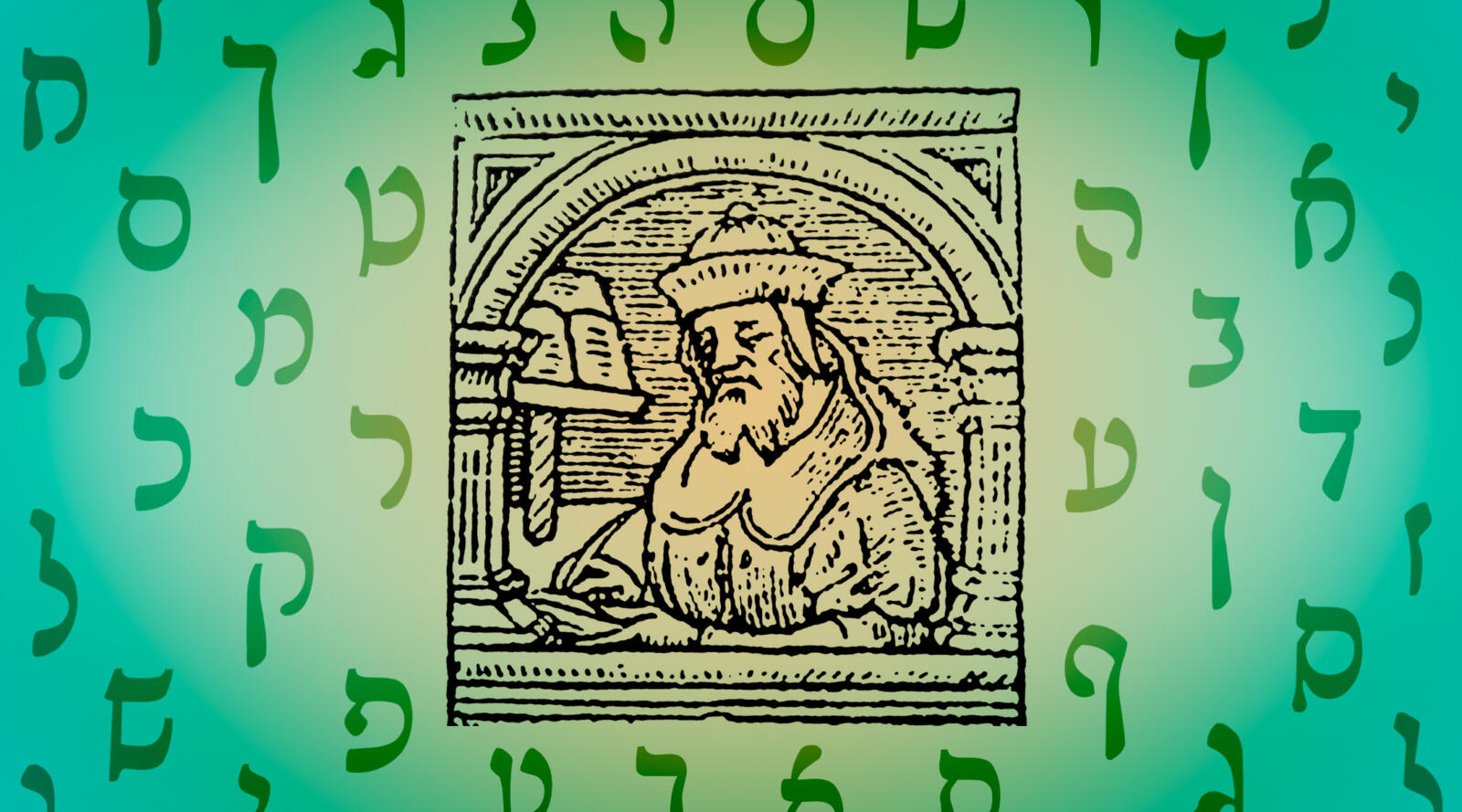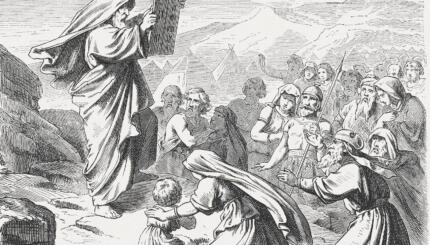Rabbi Solomon ben Isaac (Shlomo Yitzhaki), known as Rashi (based on an acronym of his Hebrew initials), is one of the most influential Jewish commentators in history. He was born in Troyes, Champagne, in northern France, in 1040.
At age 17, Rashi received an education in the yeshiva of Rabbi Yaakov ben Yakar in Worms, where the “Rashi Chapel” was built years after his death (this chapel was subsequently destroyed during the German occupation in World War II, and rebuilt in 1950). At age 25, he returned to Troyes, where he became a rabbi. Since rabbis were not yet paid officials at this point in time, Rashi also worked with his family in the local vineyards. In 1070, he founded a yeshiva where he taught many disciples, some of whom would also go on to become prominent Jewish scholars. In 1096, Rashi witnessed the massacre of friends and family members at the hands of Crusaders en route to the Holy Land. He died in 1105 in Troyes.
Rashi’s Major Works
Rashi’s best-known works are his comprehensive commentaries on the Bible and the Babylonian Talmud. All editions of the Talmud published since the 1520s have included Rashi’s commentary in the margins. His commentaries on the Bible have become a foundational element of Jewish education to this day; they are often taught side by side with the Torah when students begin learning in yeshivas and Jewish day schools. Rashi’s commentaries on the Bible are based on the Masoretic text, a version of the Bible compiled by scholars between the seventh and 10th centuries, in which they clarified pronunciation by establishing a vowel notation system. In preparing the Masoretic version, the scholars also tallied the number of times particular words appeared, presumably in an effort to determine those words’ significance.
In addition to his commentaries, Rashi also produced responsa on a range of Jewish legal questions as well as writing devotional poetry.
With your help, My Jewish Learning can provide endless opportunities for learning, connection and discovery.
Rashi’s Signature Style
Rashi’s commentaries combine an explanatory style that elucidates the simple meaning of the text (known as pshat) and an interpretive style that elaborates further (known as drash). He collects, distills and weaves in classical rabbinic interpretations, while adding his own perspectives. There is some debate about Rashi’s accessibility to the general reader. Because his language is clear and concise, his work is often characterized as intended for the masses. However, his conciseness assumes that the reader has some foundational knowledge and that he therefore did not have to explain everything in detail.
Rashi is known for his clarity of style, his conciseness, and his ability to shed light on obscure ideas. Writing primarily in Hebrew, he occasionally coined his own terms in his commentaries. He also frequently translated Hebrew terms into French, writing the French in Hebrew script (these terms were known as la’azim), as a way to instruct his French-speaking audience, especially on subjects that impacted daily life, such as Shabbat observance, the laws of kashrut and relations with non-Jews.

Rashi’s Impact
Rashi’s writings and his methods of interpreting texts spread rapidly and influenced all successive rabbinic commentaries. Thanks to his many disciples who shared his work, his writings and his approach to text study quickly came into use in Jewish communities all over France, and during his lifetime spread to northern Europe. Within a century his work spread farther to other countries. In fact, the world’s first printed book in Hebrew was Rashi’s commentary on the Bible, printed in Reggio, Italy, in 1475.
Among Rashi’s disciples were his family members, who became well-known Talmudists in their own rights. His son-in-law Isaac ben Meir, known as Ribam, along with his grandsons Samuel ben Meir, known as the Rashbam, and Jacob ben Meir, known as Rabbenu Tam, all transmitted and expanded upon Rashi’s teachings. Building on Rashi’s approach, Rabbeinu Tam’s Sefer Ha-Yashar (Book of the Just) introduced a new form of interpretation that became associated with the literature of Tosafot, Hebrew for “additions.” The literature of the Tosafot analyzes a text from many angles, raises objections to arguments and offers possible solutions. This differs from Rashi’s style of presenting clear and simple explanations for textual questions.
Much other Jewish scholarship was directly influenced by Rashi’s work, including the Sefer Ha-Pardes (Book of Paradise), which presents responsa by Rashi’s contemporaries and disciples; the Sefer Ha-Orah (Book of Light), which was compiled from works in the 12th and 14th centuries; the Sefer Issur Ve-Heter (Book of Things Prohibited and Permitted); and the Mahzor Vitry, which includes legal rules and responsa. In addition, Rashi’s commentaries spawned over 300 “super-commentaries” (commentaries on his commentary).
Rashi’s influence extended beyond the Jewish community. The biblical commentaries of Franciscan monk Nicholas de Lyra, born in 1292, depended heavily on Rashi’s work; de Lyra’s work later influenced Martin Luther and the Protestant Reformation. Rashi’s commentary on the Bible was translated into Latin by Christian scholars in the 17th and 18th centuries, and was translated into German in 1838.
Though his work is not considered to be philosophically original, unlike the work of someone like Maimonides, Rashi has exerted the widest influence of any other Jewish commentator on subsequent Jewish literature and remains a fixture in Jewish learning to this day.
Mahzor
Pronounced: MAKH-zore, Origin: Hebrew, literally “cycle” the mahzor is the special prayer book for the High Holidays, containing all the liturgy for Rosh Hashanah and Yom Kippur.
Talmud
Pronounced: TALL-mud, Origin: Hebrew, the set of teachings and commentaries on the Torah that form the basis for Jewish law. Comprised of the Mishnah and the Gemara, it contains the opinions of thousands of rabbis from different periods in Jewish history.
Torah
Pronunced: TORE-uh, Origin: Hebrew, the Five Books of Moses.
Yaakov
Pronounced: YAH-kove or YAH-ah-kove, Origin: Hebrew, Jacob, one of the Torah's three patriarchs.
yeshiva
Pronounced: yuh-SHEE-vuh or yeh-shee-VAH, Origin: Hebrew, a traditional religious school, where students mainly study Jewish texts.



